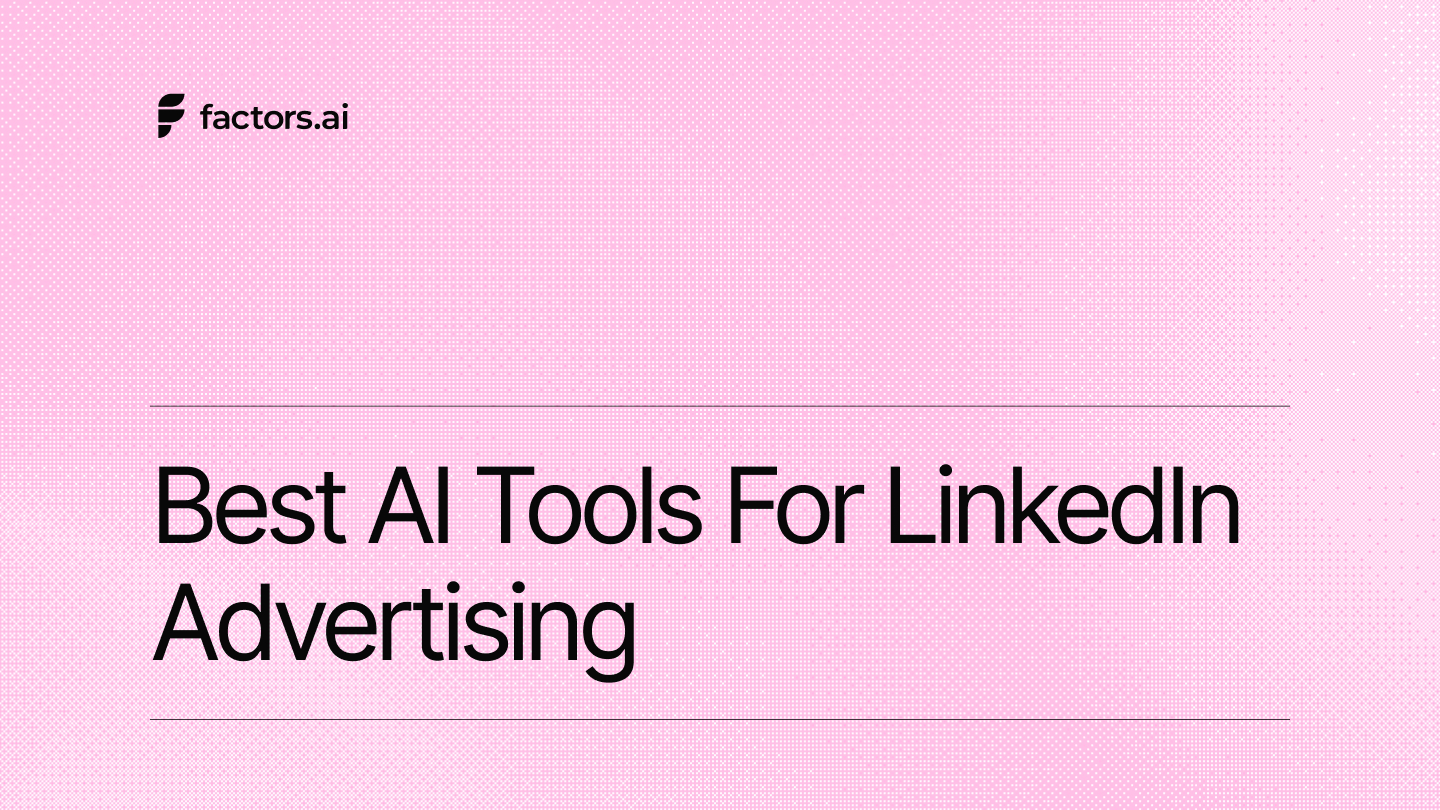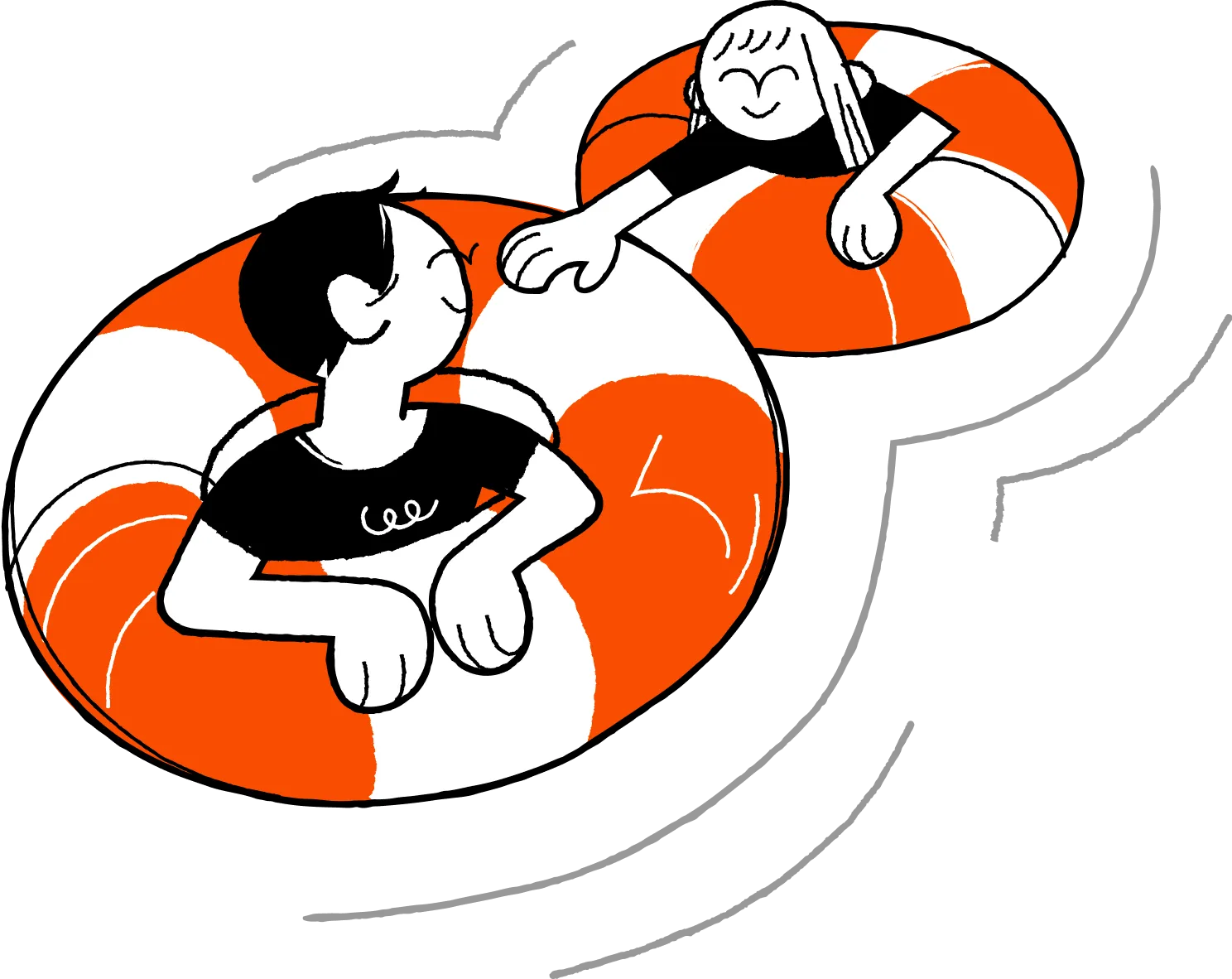Complete Guide to Customer Journey Stages for Maximum Retention
Master customer journey retention with our guide. Learn proven strategies for each journey stage to maximize retention, reduce churn, and grow recurring revenue with data-driven approaches.
Today, real customer journeys are messy and heavily impacted by AI-powered flows. Marketers need to guide them through confusion by setting clear expectations, delivering quick wins, demonstrating steady value, and offering timely help.
Do that consistently, and the result is most likely, durable retention. Retention isn’t about occasional grand gestures—it’s the compound effect of small, consistent actions. And every marketer will tell you, keeping existing customers is cheaper than acquiring new ones.
This guide details essential tactics to maximize retention across seven customer journey stages. It will discuss goal-setting, metrics that predict success/failure, intent-based retention strategies, and optimal automation approaches that reduce pointless grunt work – all while establishing flows for retention optimization.
TL;DR:
- Customer retention spans seven stages from first click to advocacy. Small, honest moments (clear expectations, quick wins, steady value) compound into loyalty; overpromising and slow value create churn.
- The seven stages of the customer retention journey: Awareness & Initial Engagement → Consideration & Evaluation → Purchase & Onboarding → Initial Value Realization → Ongoing Engagement & Expansion → Renewal and Loyalty → Advocacy
- Ditch linear lead funnels. Use an account-first, signal-driven, non-linear model with re-entry points and context that follows the buyer.
- Multiple roles decide (user, RevOps/IT, security, exec) purchases for B2B domains. Early weeks post-purchase—integrations, data quality, change management—swing long-term outcomes.
- Metrics to care about: Identified accounts, ICP coverage, return visits, TTFV, adoption breadth, health trends, and advocacy activations.
B2B Customer Journey Mapping is Non-Linear
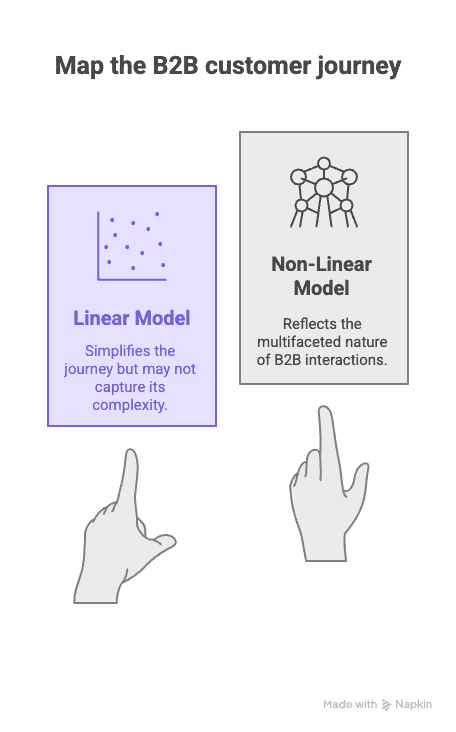
Here’s a more realistic path for non-linear B2B customer journey mapping:
Someone browses pricing → disappears → returns via a comparison page → requests a demo two weeks later → an admin sets up the product → adoption stalls → a new feature sparks usage → exec sponsor re-engages after a quarterly review.
Hence, modern B2B customer journey retention strategies are best designed for re-entry points and context persistence. These journeys aim to anticipate drop-offs, personalize customer service, and make the product's value so obvious that it cannot be ignored.
📖Read More: B2B Marketing Funnel vs. B2C Marketing Funnel: 15 Critical Differences That Drive Conversion
Here’s a quick preview of traditional vs. modern customer journey mapping for retention:
7 Stages of the Customer Lifecycle Retention
Every marketing, sales and product team, no matter the industry, must establish their strategic directions in light of these customer journey touchpoints for retention.
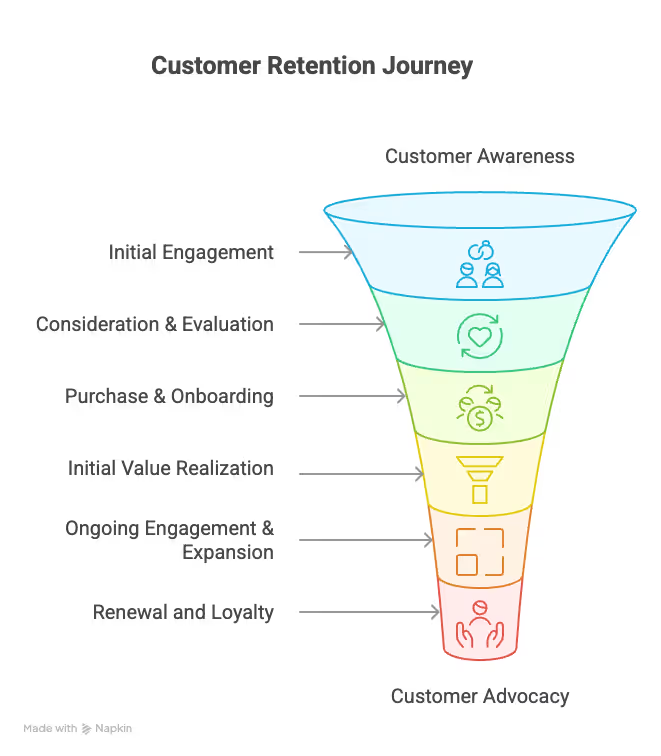
Stage 1: Awareness & Initial Engagement (Account Intelligence for Retention)
At this stage, potential customers have just discovered a brand via a search, ad, post, referral, or random scroll. They are wondering if a brand/product is the right fit, and need to know what you do and how you can serve them.
Sustained B2B customer journey retention strategies begin with a good (and honest) first impression. You have to attract the right customers and set clear expectations right from the get-go.
IMAGE HERE

You need appropriate account intelligence for retention. Find high-retention-potential accounts early, across all channels. Factors, for instance, can help you find companies visiting your website, as well as capture intent signals from all locations to know who is in-market for your business.
The right accounts i.e., your Ideal Customer Profile, tend to:
- Fit the industry, company size, tech stacks and regions your brand can serve best.
- Signal custom needs, price-sensitivity patterns, and/or multiple short trials in your CRM.
- Express what they really need: attribution, integration, security, etc.
💡Your accounts are showing intent. What’s next? Again, you need account intelligence for retention.
Content strategies play a huge role in attracting the right-minded prospects:
- Being upfront about which customers you can serve best, for instance, industry/segment pages with real examples and limits.
- Showcasing outcome-first case studies that lead with time-to-first-value, adoption breadth, and habit creation.
- Outlining a public success plan to be executed post-purchase.
- Offering sample data with real-world maps and rate-limit caveats.
- Offering an onboarding checklist with data on roles, time estimates and desired results.
- Clarifying pricing: what’s included, fair-use limits, and common add-ons.
- Creating role-based pages for buying committees, with dedicated information for marketing, RevOps, security and executive teams.
Read More: How Klenty increased website conversions by 34% with Factors
Stage 2: Consideration & Evaluation
At this stage, prospects are testing your brand, comparing products and building internal cases for final purchase. Multiple stakeholders are involved. As the marketer or sales professional, you need to convince accounts to adopt the product smoothly, build a weekly habit, and stick around.
Demonstrate value to improve customer retention odds:
- Pilot one core weekly workflow. Define what ‘good’ is, and show how your product can facilitate success.
- Promise a small yet necessary result within 14 days. This can be an active audience, live report, or alerts needed by sales teams.
- Show a short Loom video of the weekly cadence with clarity on where metrics live, how alerts show up, and what explanations are offered.
When it comes to retention concerns, address common reasons for product failure before signing the contract:
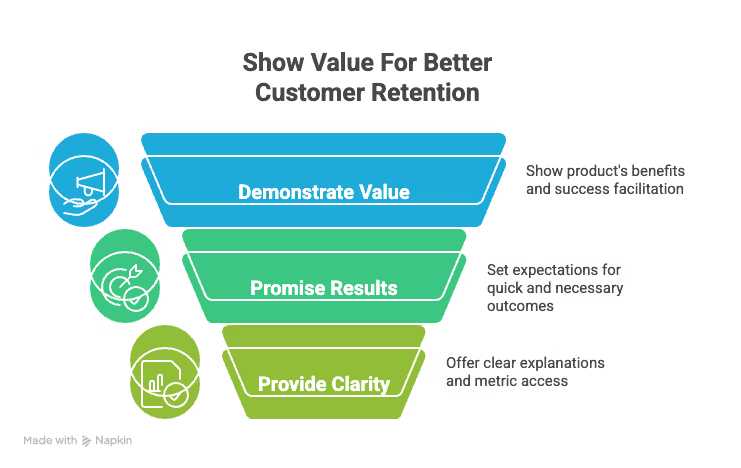
Utilize intent signals to personalize evaluation:
- Map behavior to content. If prospects are engaging with attribution content, lead with clarity on reporting outcomes. If they engage with security pages, start the conversation with data safety and controls.
- If someone has checked pricing + security in one session, invite stakeholders from each team for meetings.
- If prospects are leaving a trail of comparison traffic, create a side-by-side narrative focused on outcomes and time-to-value.
Run strategies for competitive positioning:
- Prioritize fewer moving parts, clean integrations, realistic setup times, clear ownership.
- Share week-to-week dashboards, alerts, and review cadences to keep usage active.
- Acknowledge if a rival does something better. Explain why your workaround will solve the gap and/or why your prospect won’t need the feature.
- Lead with case studies that match the prospect’s size, stack, and constraints.
- Offer a migration guide, reversible first steps, and a clear success exit if it’s not a fit.
Have a look: Drivetrain's 3x Boost in Sales Engagement with Factors.ai
Stage 3: Purchase & Onboarding
At this stage, the customer has already said yes. Now, you need to guide customers through data connections and first workflows. Help them settle into a weekly rhythm.
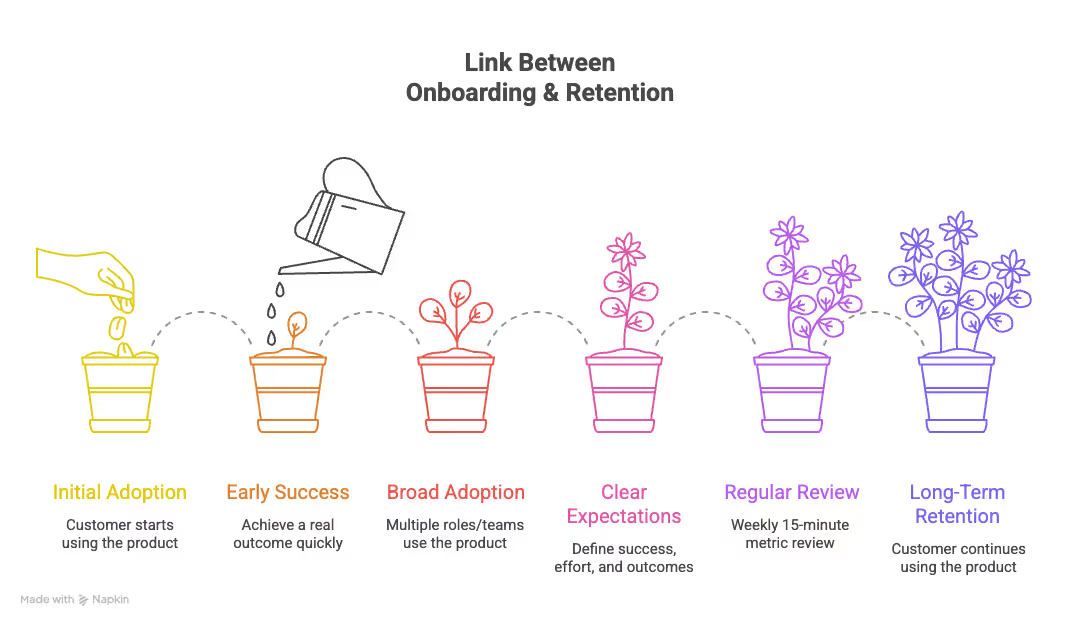
Notice the critical link between onboarding and long-term retention:
- The sooner a customer achieves a real outcome, the more likely they are to keep using the product.
- See if two or more roles or teams can adopt the product early. It increases the likelihood of usage, irrespective of vacations, team changes and shifting goals.
- Underline what customers can really expect, what effort they need to put in, and what counts as ‘success’.
- Set up a recurring, 15-minute review every week. Look at the same metrics and identify improvements.
Utilize a modern onboarding framework focused on value realization:
Identify early churn signals:
- No identifiable value delivered within 30 days.
- Only one person from one team is engaging with marketers/sales folks.
- Kickoff is complete. But integrations and first tasks are stalled.
- Too many calls to the help center without much progress.
Tailor examples, dashboards, and checklists that resonate with customers’ specific interests. Adjust cadences (weekly or twice-weekly) depending on necessity.
Adopt a few automation strategies to scale onboarding. Configure the setup so that if an opportunity closes, the pipeline automatically creates a mutual success plan, kickoff agenda, task list, and owner assignments in the CRM.
📚Read how you can set up Sales Automation Workflows using Factors
Stage 4: Initial Value Realization
By now, new customers have moved from setup to the first meaningful outcome; they now know that the tool works for them. It can be a live audience feeding sales, an insight that changes a decision, or an alert the team actually uses.
Use the account intelligence you already have to accelerate more value for customers. For example, pre-set some integration paths for their stack (HubSpot vs. Salesforce) so the process is quickly underway. If customers engage most with attribution content, offer a solid ROI report.
IMAGE HERE
<CTA> "Discover how Factors . ai's Account Intelligence platform can help you identify retention risks and opportunities throughout your customer journey. Request a personalized demo today to see how our intent-based approach can boost your retention metrics." <CTA>
Present a success plan appealing to specific personas. For example, a first win for marketing leads would be a live campaign/audience. But a first win for sales managers would be qualified intent alerts.
All plans should clearly state the goal, owner, date, evidence (screenshot/report), and the next step to take after the win.
Don’t forget to celebrate early wins:
- Make it public by sharing a one-page recap with before/after results.
- Give credit to the customer’s team where it is due.
- Use the momentum of the first win to invite other teams to try the tool.
Stage 5: Ongoing Engagement & Expansion
The product is now in regular use. You now have to keep customers using the product, identify prospects for improvements, and convert satisfied customers into advocates.
🧠 Bear in mind: Investing in customer success delivers 107% ROI within three years
Start with a framework to find openings for expansion:
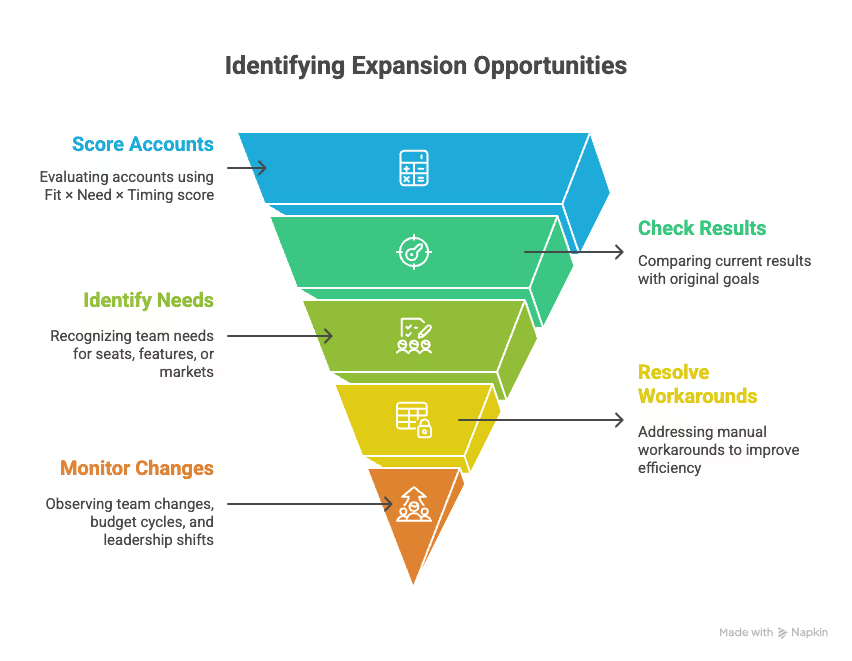
- Devise a Fit × Need × Timing score (0–2 for each) per account.
- Check if the current customer results match the original goal.
- See if teams are looking for more seats, features, or trying to tap new markets.
- Are any manual workarounds occurring? Solve them.
- Keep an eye out for team changes, budget cycles, leadership shifts and upcoming events.
IMAGE HERE
Scan intent signals to time conversations around expansion:
- Customer visits to advanced feature pages, pricing tiers, and integration docs.
- Spikes in product usage.
- Executive stakeholders opening business reviews and ROI dashboards.
Create engagement loops that reinforce product value:
Consider setting up small, repeatable cycles that go:
trigger → use → result → share → next step.
For example, ‘Monday intent review → outreach list → meetings booked → recap → new audience to test.’
Stage 6: Renewal and Loyalty
The customer is now seeing value consistently enough to keep renewing and (hopefully) growing. The idea is to make renewal feel obvious, rather than having to push for it. Renewing an account should feel like a no-brainer, based on real usage, outcomes and intent – especially in B2B customer journey mapping.

Renewal strategies should be proactive:
- Share a Value Recap (outcomes, adoption breadth) within 90 days..
- Propose next-90-day goals.
- Deliver a weekly scoreboard that showcases active users % (by team), feature breadth, executive engagement, and support success.
- Keep monitoring if customers are checking competitor pages or G2 comparisons.
Watch for renewal risk factors:
- Usage decline.
- Adoption by a single role only.
- Concerning churn rates.
- Unresolved support tickets.
- Negative feedback.
Shape the renewal experience to further relationships:
- Deliver previews of all terms, usage and fair use thresholds well in advance.
- Take out 30 minutes to review what improved, what didn’t, as well as planned steps for next quarter.
- Prepare a renewal packet with order form drafts, security confirmations and invoice schedules.
Encourage renewals with B2B-specific loyalty programs. This can include a customer advisory board, early access to new features, role-based certifications, and community perks (private forums, roundtables, discounts on next invoice, etc.)
Stage 7: Advocacy and Growth
Customers are now happy to become storytellers, co-builders, and advocates for your brand. Capture wins, make them visible and easy to share, and use the momentum to further new deals and drive wider adoption.
When it comes to advocacy programs, consider the following matrix (opt-in, consent-first):
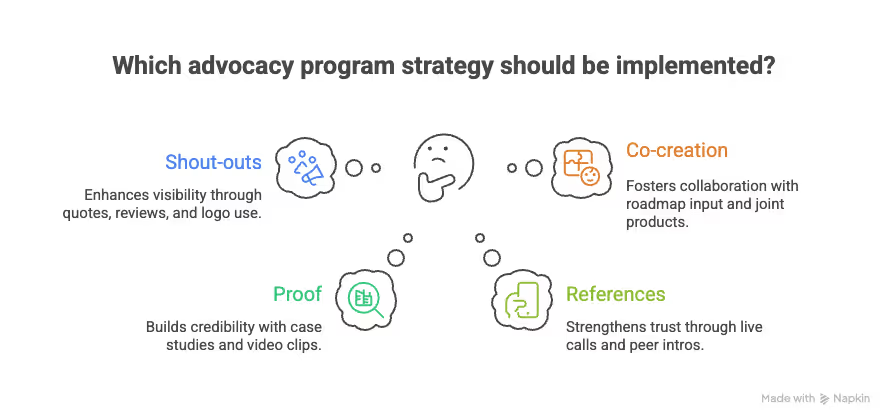
When it comes to incentives, value > swag:
- Early access to features, roadmap previews.
- Certifications, private training.
- Press, social posts, speaking slots, and customer awards.
Provide SDRs and Account Executives with customer stories matched to the role they are interacting with. Include short clips in landing pages and ads. Create templates and checklists other teams can use, based on what worked for their success story.
View customers as partners in managing integrations, devising solutions, and building thought leadership.
Finally, design a virtuous growth cycle that makes this a repeatable, almost automated process:
- Spot wins (usage/ROI dashboards, QBR notes).
- Capture (30-min interview, pull data, secure approvals).
- Package (case study, clip, 3-slide deck, reusable template).
- Amplify (site, social, community, sales deck insertion).
- Enable (playbooks so other customers can copy the result).
- Recognize (public spotlight, early access, CAB invite).
- Reinvest (feed insights to roadmap and onboarding).
📚Take a look at our Case Studies to see how we feature client success stories.
Pursue community-building strategies that improve retention:
- Initiate template swaps for dashboards, audiences, and reports in relevant Slack/Discord groups.
- Run customer roundtables to share strategies for governance and change management.
- Build a customer advisory board to gather quarterly feedback. Offer early access and public acknowledgements for their achievements.
Your customers are your best advocates for new accounts and retention optimization. Run a few short interviews with pointed questions, and give tangible perks for participation: early features, VIP support, conference passes.
📚Helpful reading: 2025 B2B SaaS Benchmarks Report
Measuring Customer Journey Retention Success
Key metrics for each stage in customer lifecycle retention:
Pay attention to retention dashboards and reporting. Curate different views for stakeholder audiences, depending on different customer journey touchpoints for retention:
Consider these formulas for calculating retention ROI:
- ROI = (Expansion + Renewal Revenue Preserved + Churn Avoided − Account Cost) ÷ Account Cost.
- Churn Avoided = risk baseline vs. actual churn for exposed cohorts.
1000+ GTM teams have improved their marketing ROI with Factors.ai. Here’s how.
How Factors addresses retention challenges
When designing your unified stack, deploy integration strategies meant to provide one-shot views of execution pipelines:
Finally, don’t forget to leverage automation opportunities across each customer journey. Technology can actively help create better customer experiences. A few examples:
- Awareness: automate to achieve account intelligence for retention, auto-segment ICP and sync audiences.
- Evaluation: automatically trigger stage-based nurtures, and alert reps when prospects visit pricing+security pages.
- Onboarding: auto-create success plan, tasks, and nudges declaring first wins.
- Engagement: automate weekly follow-ups, and alerts on any positive signs for possible expansion.
- Renewal: automated alerts and dashboards on health-dip and competitor search. automated renewal packet generation.
- Advocacy: invite customers to become advocates automatically when they hit certain usage actions and thresholds.
FAQs
Q. What’s the best way to increase customer retention?
A. Get customers to see the value of your product as soon as possible. Make onboarding seamless and remove friction. Ask for feedback often, and actively work to fix issues across the customer lifecycle for retention.
Pay attention to customer satisfaction across all customer journey stages to improve retention.
Q. How do you keep your customers coming back?
A. Deliver active reasons to return. This could be timely emails with offers and follow-ups. You could offer easy solutions to current problems, and even credit them for the wins they achieve with your tool. Consistency is your friend.
Pay particular attention to B2B customer journey mapping.
Q. How do you best handle churn?
A. Find out why people leave. It could be price, missing value, bad fit and so on. Generally, simple fixes are feasible, early check-ins, offering a pause option or workaround, active remediations of their problems.
Start with obtaining appropriate account intelligence for retention.
Q. How do you best reduce churn?
A. Talk to users when they cancel their plan. Go through reasons and see if any issues are re-occurring. You can also offer relevant training, discounts and product fixes to sweeten the deal.
Q. How much should you prioritize customer retention?
A. Keeping existing customers is cheaper than acquiring new ones. Run your retention optimization flows with some basic guardrails: active support, reminder, loyalty rewards.
Q. What are some customer retention strategies for scaling?
A. At a high-level, consider these strategies for customer lifecycle retention:
- Automate the boring stuff: win-back emails, renewal nudges.
- Reserve human effort for high-value customers or complex cases.
- Keep a close eye on why customers keep leaving (from exit interviews) and focus on fixing those first.
Q. How do I focus on retention for an e-commerce (subscription-based) start-up?
A. To run effective customer lifecycle retention, start with these steps:
- Set clear expectations.
- Ship product/service on time.
- Allow for easy pausing anytime the customer desires.
- Offer rewards for achieving milestones.
- Send tactful renewal reminders, with tailored renewal packages.
- Advocate for renewals with solid evidence.
See how Factors can 2x your ROI
Boost your LinkedIn ROI in no time using data-driven insights
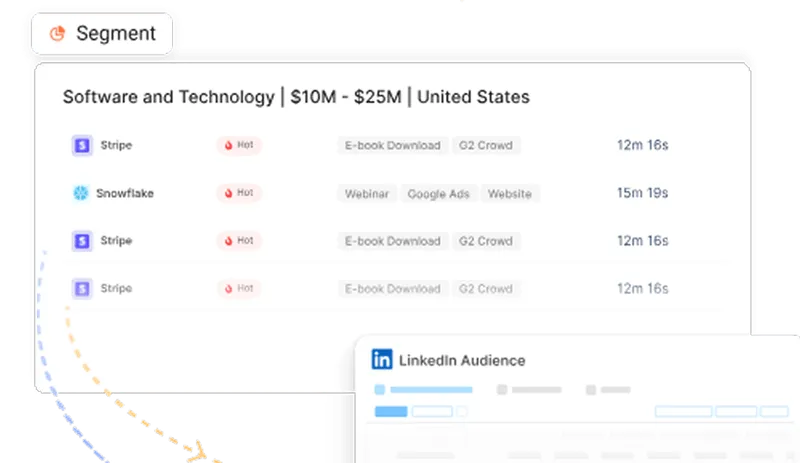
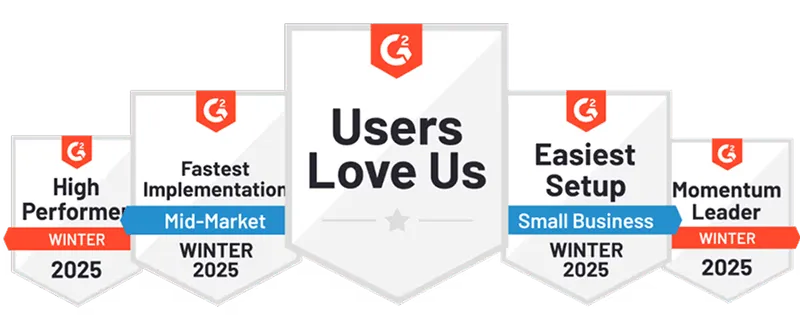
See Factors in action.
Schedule a personalized demo or sign up to get started for free
LinkedIn Marketing Partner
GDPR & SOC2 Type II
.svg)






